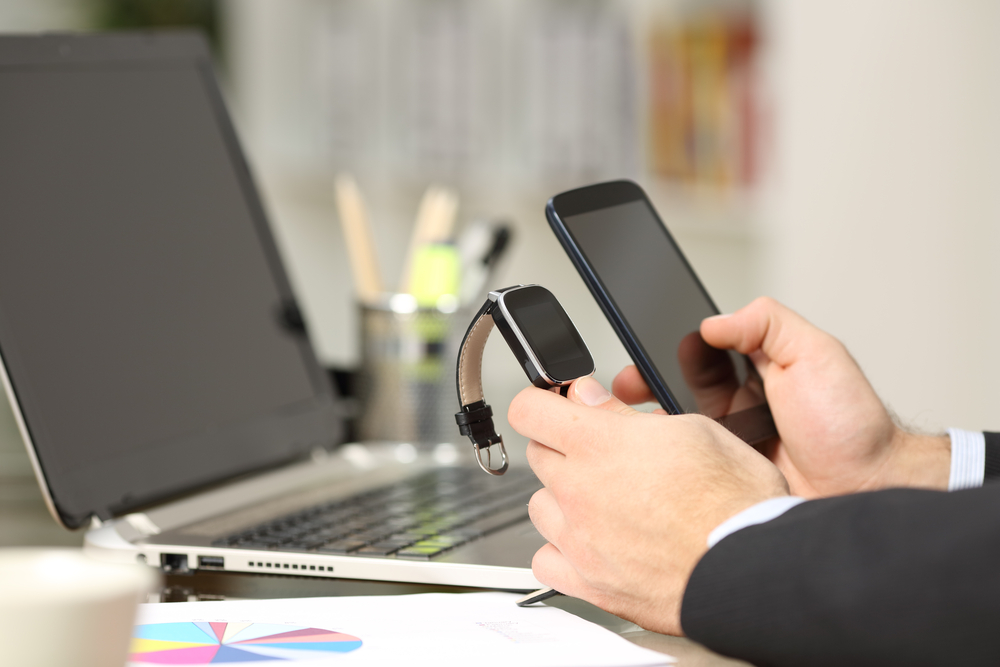Nuances and Limitations of Wearable Discovery

It is no secret that the onset of wearable technology has resulted in the creation of more personal activity data than ever before. Fitness trackers and smartwatches record our location history, heart rates, how often we sit or stand, how far and fast we walk, and even our mood and stress levels. The significance of this wearable data in discovery should go without saying; the right information could help prove or undermine the extent of a plaintiff’s alleged injuries or a defendant’s alibi, and this utility has not been lost on litigants. By now, this information is generally well known—in fact, the internet is replete with information related to the size of the wearable market and its general importance to attorneys seeking discovery, and such advice need not be repeated here. But what is often overlooked in these discussions are some of the key nuances of wearable technology, such as where the data these devices generate is actually stored, and how it is used. The purpose of this article is to highlight some of these nuances and to offer advice to litigants looking to better craft and target their discovery requests. More specifically, litigants need to understand the differences between various devices and their limitations if they are to effectively seek out wearable data in discovery. What follows is a brief rundown of the most common wearable devices litigants are likely to come across, their limitations, and advice on what to consider when drafting discovery requests.
1. The Apple Watch
The Apple Watch may be the gold standard as a source of wearable data for litigants, as it is both widely used and filled to the brim with sensors—including everything from a simple accelerometer and heart rate monitor, to fall detection and even an electrocardiogram reader on the more recent models. It is, by Apple’s numbers, not only the best-selling smartwatch and activity tracker in the world, but the single best-selling watch, period. That all said, it is necessary to acknowledge the Apple Watches limitations when preparing discovery requests. First, it is important to remember that for all its utility, the Apple Watch can only be used by individuals who own iPhones; it cannot stand alone and will not work with any other smartphone operating system. Furthermore, litigants should understand that very little activity information is stored on the device itself; the vast majority of the data the Apple Watch generates is offloaded to the user’s iPhone for long-term storage. Furthermore, tens of thousands of applications can be downloaded both to the user’s iPhone and Apple Watch that could expand on or modify activity data. For example, the Apple Watch does not natively track users’ sleep patterns, but this feature can be easily added by installing a third-party application. Litigants should be aware of these considerations and be prepared to request not only a party’s Apple Watch activity data but also the data stored on their phone and inside the third-party applications that make use of it if they are to get the most complete and accurate representation of the party’s activity.
2. Fitbit Activity Trackers
One of the other more popular wearable brands is Fitbit, which produces a plethora of fitness trackers and smartwatches of different levels of complexity and price points. In terms of activity tracking, Fitbit devices are fairly comparable to the aforementioned Apple Watch, but litigants should be aware of several key differences. Unlike the Apple Watch, Fitbit devices are platform-agnostic; where the Apple Watch can only be used by individuals who own iPhones, Fitbit activity trackers will work with nearly any modern smartphone. As such, Fitbit can reach a wider user demographic. They are also comparatively more straightforward than the Apple Watch—where the Apple Watch pulls double duty as an activity tracker and a do-it-all smartwatch, Fitbit devices tend to be more primarily focused on fitness. That said, much of the advice applicable to the Apple Watch remains the same, here: the data generated by Fitbit devices is ultimately stored on the owner’s phone, and litigants should similarly be on the lookout for third-party applications that may make use of that data. While the company’s devices do not boast the tens of thousands of applications the Apple Watch does, Fitbit still has dozens of partnerships with third-party applications, each of which may offer a potential data point and could be easily overlooked.
3. Smartphones
The last of the major categories of activity trackers litigants should seek in discovery is the common smartphone. These days, a surprising amount of activity tracking is built right into many, if not most smartphones: both Apple’s Health application and Google’s Google Fit application will track smartphone users’ walking activity automatically and could store potentially years’ worth of activity data, even if the individual does not own or use a wearable device. After all, there is very little practical difference between wearing a device on your wrist and keeping one in your pocket all day. This is to say nothing of the thousands of third-party health and fitness applications an individual might download to manually log workouts, eating and drinking habits, meditation exercises, and more. For this reason, litigants would do well to not limit their discovery requests to dedicated fitness or activity tracking devices and include requests for any standalone smartphone applications that may hold similar information.
4. The Rest
While the digital devices discussed above represent some of the most common sources of individuals’ activity data, litigants should be careful not to lose sight of more esoteric sources as well, and tailor their discovery requests appropriately to the situation. For example, several traditional watchmakers have recently dabbled in so-called “hybrid” watches, which look no different than a standard analog watch but include a step counter that communicates with the user’s smartphone. Due to their more traditional design and limited utility, a user may not consider hybrid watches to be “wearables” or “fitness trackers” per se, despite this functionality, and therefore litigants should be sure to include them in their wearable definitions. Similarly, litigants should be careful not to call out any particular brand or device, specifically. While the devices mentioned above may be some of the most widely recognized, many people purchase wearable technology from Xiaomi, Garmin, or other companies the requesting party may not be as familiar with. Furthermore, litigants may also want to broaden their discovery beyond activity trackers to capture data from inactivity trackers as well; while perhaps less common than the devices previously discussed, dedicated sleep trackers that live in users’ pillows and mattresses are readily available and may be just as useful to litigators, depending on the facts of the given case. It is fair to say that if one can think of an activity, someone, somewhere, is building a tracking device or application for it, if one doesn’t exist already. One need only know what they are looking for, and how to ask for it.
This article is a publication of MWH Law Group LLP and is intended to provide general information regarding legal issues and developments to our clients and other friends. It should not be construed as legal advice or a legal opinion on any specific facts or situations. For further information on your own situation, we encourage you to contact the author of the article or any other member of the firm.
© MWH Law Group LLP 2019. All rights reserved.
CONTACT ATTORNEY LOGAN S. KRAUS

Logan S. Kraus
Associate – West Des Moines
1501 42nd St., Suite 465, West Des Moines, IA 50266
P: (515) 453-8509 / F: (515) 267-1408
E: logan.kraus@mwhlawgroup.com
Download Attorney Biography

